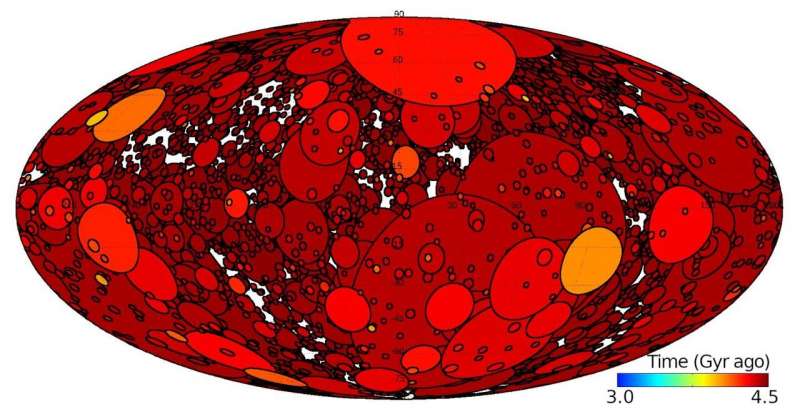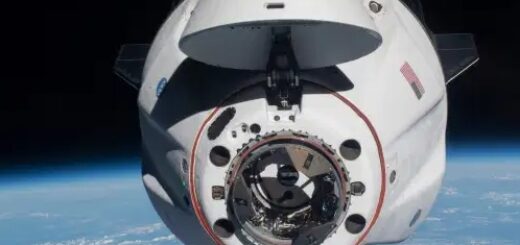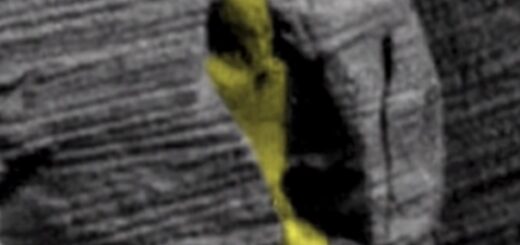Scientist proposes a new timeline for Mars terrains

A Southwest Research Institute scientist has updated Mars chronology models to find that terrains shaped by ancient water activity on the planet’s surface may be hundreds of millions of years older than previously thought. This new chronology for Mars, based on the latest dynamical models for the formation and evolution of the solar system, is particularly significant as the days count down until NASA’s Mars 2020 Perseverance rover lands on the Red Planet on February 18, 2021.
Unlike on Earth, where terrains are commonly dated using natural radioactivity of rocks, scientists have largely constrained the chronology of Mars by counting impact craters on its surface.
“The idea behind crater dating is not rocket science; the more craters, the older the surface,” says SwRI’s Dr. Simone Marchi, who published a paper about these findings accepted for publication in The Astronomical Journal. “But the devil is in the details. Craters form when asteroids and comets strike the surface. The rate of these cosmic crashes over the eons is uncertain, hampering our ability to convert crater numbers to terrain ages. I took a fresh look at this and built on recent developments in the way we understand the earliest evolution of the solar system.”
Scientists have used radiometric ages of precious lunar rocks brought back by the Apollo missions to calibrate a lunar crater chronology. This lunar chronology is then extrapolated to Mars, and this is where things get tangled with the earliest evolution of the solar system. Our understanding of the time evolution of lunar and Martian impact rates has greatly improved in recent years. The present model improves upon how the critical Moon-to-Mars extrapolations are done.
The Jezero Crater on Mars, the landing site for NASA’s Mars 2020 mission, shows evidence of water carved channels and transported sediments. Colors highlight the distribution of clays and carbonates. An SwRI scientist updated Mars chronology models and predicted that these surfaces could have formed more than 3 billion years ago, which means they are hundreds of millions of years older than previously thought. Credit: NASA/JPL-Caltech/MSSS/JHU-APL
“For this paper, I looked particularly at the Jezero Crater because that is the landing site for the Mars 2020 Perseverance rover,” Marchi said. “These surfaces could have formed over 3 billion years ago, as much as 500 million years older than previously thought. NASA plans to have Perseverance gather and package surface samples that can be collected by a future mission for return to Earth for radiometric dating. That could provide vital ground-truth data to better calibrate our chronology models.”
Jezero Crater has a diameter of about 30 miles located within the 750-mile-wide Isidis Basin, created by an earlier impact. The latter cut a wide portion of the Borealis Basin’s rim, perhaps the largest and oldest impact basin on Mars. This coincidence of nested craters is of particular interest as samples from these terrains may return information about the timing of these consecutive impacts.
Furthermore, Jezero Crater hosts clay-rich terrains and a fluvial delta, indications that the crater once hosted a lake. This makes the Jezero Crater an ideal place to fulfill the Mars 2020 mission’s science goal of studying a potentially habitable environment that may still preserve signs of past life. As such, understanding the timeline of these surfaces is particularly important.
The new model also provides a revised age for Isidis Basin, now estimated to be 4-4.2 billion years old, providing an upper limit for the formation of Jezero Crater and water activity at this location on Mars.



 Creators of mankind
Creators of mankind Description of “Tall white aliens”
Description of “Tall white aliens” Where they came from?
Where they came from? About hostile civilizations
About hostile civilizations The war for the Earth
The war for the Earth “Tall white aliens” about eternal life
“Tall white aliens” about eternal life Video: “Nordic aliens”
Video: “Nordic aliens” Aliens
Aliens Alien encounters
Alien encounters The aliens base
The aliens base UFO
UFO Technology UFO
Technology UFO Underground civilization
Underground civilization Ancient alien artifacts
Ancient alien artifacts Military and UFO
Military and UFO Mysteries and hypotheses
Mysteries and hypotheses Scientific facts
Scientific facts


















